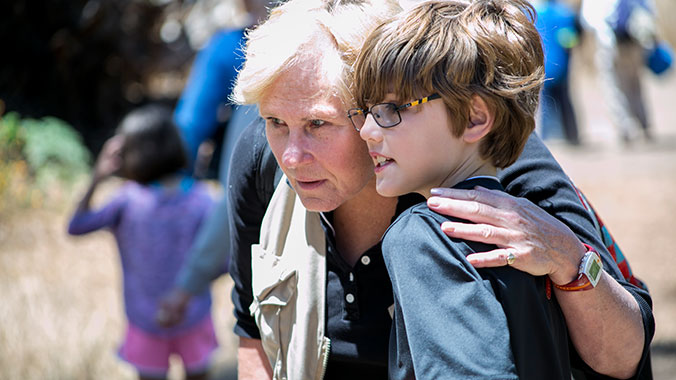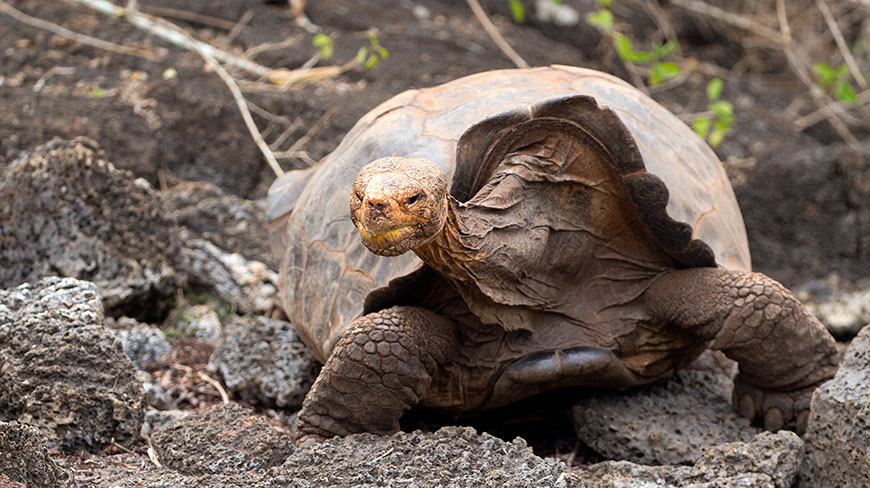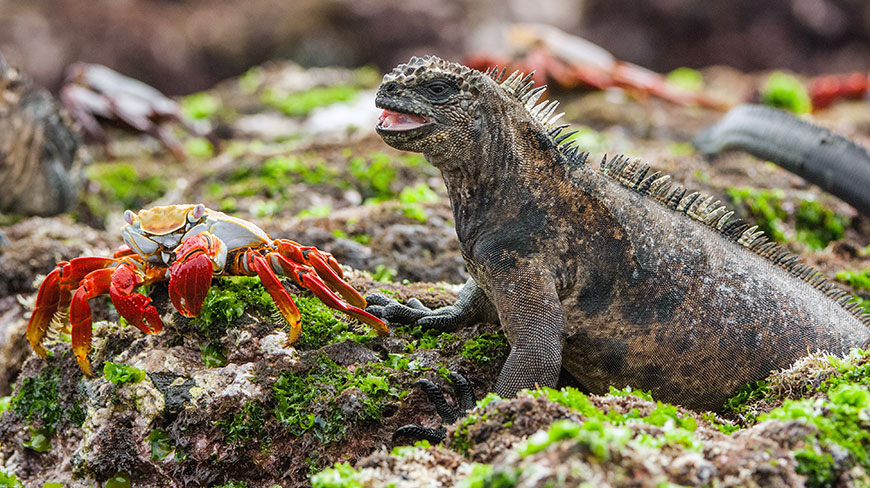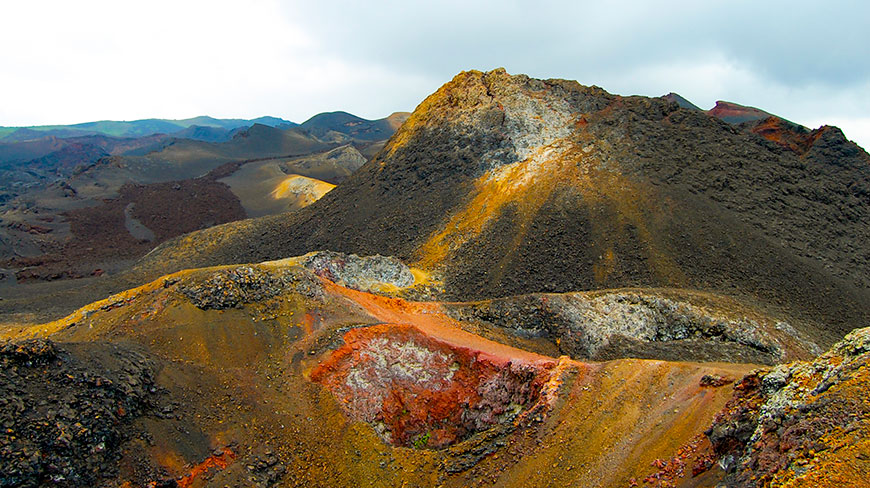Birds, Mammals and Reptiles of the Galapagos Islands
by Andy Swash, Robert Stills
This strikingly compact, comprehensive field guide features 500 color photo-graphs, distribution maps and information on status, habitat and behavior.
Charles Darwin and the Evolution Revolution
by Rebecca Stefoff
This nicely presented account of Darwin for young adults focuses on the social and scientific context of his life and work. It's an excellent short biogra-phy. With 19th-century illustrations, cartoons and photos.
Charles Darwin Slept Here
by John Woram
John Woram recounts with verve and humor the human history of the archipelago, featuring a colorful cast of buccaneers, scientists and adventurers. With ar-chival drawings, maps and extensive notes.
Ecuador and the Galapagos Islands, Travellers' Wildlife Guides
by David Pearson, Les Beletsky
An excellent guide to Ecuador's wildlife, featuring concise descriptions and color illustrations of 500 frequently encountered reptiles and amphibians, birds, mammals and insects. The Galapagos Islands get a separate chapter and section of illustrations.
Ecuador in Focus, A Guide to the People, Politics, and Culture
by Wilma Roos, Omer van Renterghem
This slim guide provides a lively overview of Ecuador’s history, cultural heritage and political, environmental and economic challenges.
Evolution's Workshop, God and Science on the Galapagos Islands
by Edward J. Larson
A vivid history of the Galapagos -- and the role of the islands as a crucible of evolutionary ideas. It covers not just Darwin but the discovery of the islands, visits of Hancock and Beebe, influence of the United States during WWII, and the establishment of the national park. Pulitzer Prize-winning Larson, a historian of science, has also written about the Scopes trial (Summer for the Gods) and the creationist controversy in the United States (Trial and Error).
Floreana: A Woman's Pilgrimage to the Galapagos
by Margret Wittmer
Margret Wittmer provides a first-hand description of her experiences in the Galapagos Islands after her family settled on Floreana Island in 1932. The incredible account includes tales of challenging sea travel, sheltering in an abandoned pirates' cave, daily struggles and accomplishments, self-discovery, and very eccentric neighbors.
Flowering Plants of the Galapagos
by Conley McMullen, Ghillean Prance
Indispensable for the botanically minded, this excellent guide features color photographs of 436 species, an overview of ecology and habitats, and a plant checklist for each visitor site.
Galapagos Islands Explorer Map
by Ocean Explorer Maps
A detailed map of the Galapagos archipelago for the traveler at a scale of 1:400,000, including illustrated biographies of famous visitors, a brief wildlife guide with color photographs, a map of Darwin's route.
Galapagos Wildlife
by Pocket Naturalist
This fold-up, laminated card includes color drawings and short descriptions.
Galapagos Wildlife, A Visitor's Guide
by Bradt Travel Guides
FIELD GUIDE: A compact guide to the birds, reptiles, insects, plants and marine life of the archipelago featuring a very good selection of large color photographs. Separate chapters cover visitor sites, history, conservation and habitats. The authors present key information on the flora, fauna and places in Galapagos for the traveler.
Galapagos, A Natural History Guide
by Michael Jackson
This comprehensive overview of the habitats, plants, birds, and animals of the islands, written with the curious visitor in mind, is practically mandatory reading. It's the single best overview of the archipelago. Jackson also includes a useful bibliography, wildlife checklists and a list of plants by vegetation zone. Illustrated with many charts and maps, we refer to the book often.
Galapagos, A Novel
by Kurt Vonnegut
In this madcap novel, a classic, Vonnegut looks back from the future (alas, the human race has been wiped out except for a small group stranded in the Galapagos) on the Nature Cruise of the Century.
Galapagos, Discovery on Darwin's Islands
by David Steadman
All the birds, mammals, reptiles and other vertebrates of the Galapagos are beautifully illustrated in this insightful overview of natural history and evolution by a researcher who has worked throughout the islands. Steadman's brother Lee provides the full-color, full-page water color illustrations.
Galapagos, Exploring Darwin's Tapestry
by John Hess
Professor Hess pulls off the rare trick of being both scientifically accurate and inviting in this illustrated coffee-table primer on Galapagos, its geology, evolution and magnificent wildlife.
Galapagos, Preserving Darwin's Legacy
by Tui De Roy
Tui de Roy corralled researchers and friends for this stunning survey of the natural history, ecology and conservation of the Galapagos. With 450 breath-taking color photographs and chapters by Jack Grove (fishes), Peter and Rose-mary Grant (finches), Dennis Geist (geology) and many other scientists.
Galapagos, The Islands That Changed the World
by Paul D. Stewart
This stunning three-part BBC documentary captures the rugged beauty, allure, wildlife and history of the archipelago like never before
Galapagos, World's End
by William Beebe
A wry, wonderfully evocative account of a 1924 scientific expedition, including an excellent chapter on the human history of the Galapagos by Ruth Rose. A contemporary reviewer wrote, "Galapagos is a glorious book. It is high romance, exact science and wild adventure." Originally published in 1924, it includes several color plates and maps.
Galapagos: The Enchanted Islands, Through Writer's Eyes
by John Hickman
John Hickman weaves original accounts by Galapagos whalers, gentleman pirates, fitful castaways, settlers and scientists, including Ambrose Crowley Herman Melville, Charles Darwin and William Beebe, in this these tales of the color-ful human history of the archipelago.
Infinite Ecuador
by Sebastian Crespo
The Andes, Amazon, Pacific, Galapagos, historic cities, remote villages and farms are all on display in this collection of photographs.
Lonely Planet Phrasebooks: Latin American Spanish
by Lonely Planet
This portable phrasebook provides a useful mix of everyday phrases, words and expressions used in different Spanish speaking countries in Latin America. Learn the nuances of the Spanish language as it is spoken in Puerto Rico, Cuba, Dominican Republic, Honduras, Guatemala, El Salvador, Panama, Colombia, Venezuela, Bolivia, Argentina, Uruguay, Paraguay, Ecuador, Peru, and Chile.
Reef Identification, Galapagos
by Paul Humann
Sturdy enough to take along on a boat, this comprehensive photographic guide includes a map, checklist and brief overview of the archipelago.
The Beak of the Finch
by Jonathan Weiner
This Pulitzer Prize-winning work is an accessible look at the modern debate on the mode and rhythm of evolution, using the story of Peter and Rosemary Grant and their field work on Daphne Major as an example.
The Boy on the Back of the Turtle
by Paul Quarrington
Humorist, novelist and family man on a quest, Quarrington offers an entertaining account of a Galapagos voyage in the company of his seven-year-old daughter and seventy-year-old father.
The Galapagos Affair
by John Treherne
The book provides interesting and colorful details about some of the Galapagos' most notorious inhabitants including Baroness Wagner Eloise Von Wagner, the Wittmer family, and Dr. Friederich Ritter who settled on Floreana Island in the 1930s. The book includes all the makings of a good mystery novel; tales of illicit love and betrayal, culminating in unsolved murders and suspicious disappearances. This is a real whodunit!
The Panama Hat Trail
by Tom Miller & Tony Hillerman
An accurate and wonderfully descriptive picture of Ecuador and its people. The author tells the story of the Panama hat and the lives it touches; from growing the straw, processing it, and weaving it, to the final product that is exported worldwide.
Voyage of the Beagle
by Charles Darwin
The wide-eyed tale of a young man on a five-year voyage that changed his life -- and our way of thinking about the world. First published in 1839, this book is still essential reading. Darwin's South American chapters are an excellent introduction to the Galapagos, Beagle Channel, Chile, Tierra del Fuego, the Chilean fjords and the Brazilian coast. With maps and appendices.











